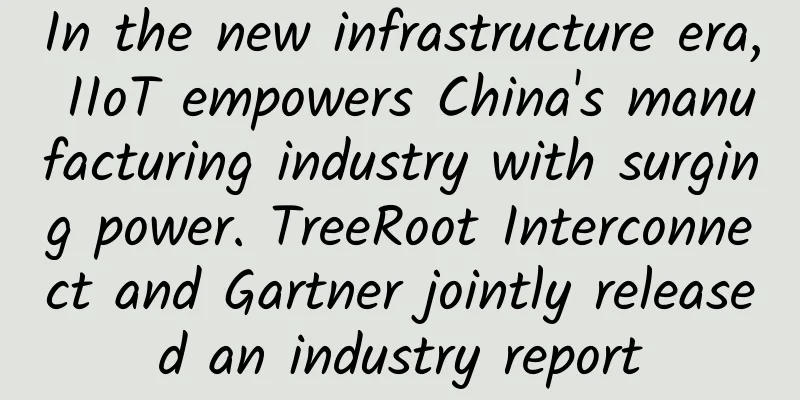5G, how is the construction going?

|
Nowadays, everyone knows about 5G. 5G has taken off with the support of policies. The overwhelming 5G-related news, the rapidly increasing number of 5G base stations, the hot sales of 5G mobile phones, and the operators' unremitting efforts to promote 5G packages... All these make people sigh that 5G is moving from the temple to the homes of ordinary people. In 2016, the Ministry of Industry and Information Technology officially launched 5G research and development experiments; in 2017, the first commercially deployable 5G NR standard was frozen; in 2018, the prototype of 5G spectrum emerged, and 5G pilot projects began, sounding the clarion call for 5G commercialization; on June 6, 2019, the Ministry of Industry and Information Technology officially issued 5G commercial licenses to China Telecom, China Mobile, China Unicom, and China Broadcasting Corporation; on October 30 of the same year, at the China International Information and Communication Exhibition, the Ministry of Industry and Information Technology and the three major operators held a 5G commercial launch ceremony, and 5G packages were launched, marking that China has officially entered the 5G commercial era. 2020 is the year when 5G will explode. Now that we are entering December, I believe the question that everyone is most concerned about is how is the construction of 5G going? The number of 5G base stations exceeds 700,000, and co-construction and sharing become a trendAffected by the epidemic, the pace of 5G construction in various places slowed down at the beginning of this year. After the domestic resumption of work and production gradually began, the Ministry of Industry and Information Technology put forward relevant requirements for 5G construction and commercial use, clearly stating that the pace of 5G commercialization should be accelerated, overall coordination should be strengthened, the construction progress should be accelerated, and construction should be resumed quickly in time. With the support at the national level, the construction of 5G, which is known as the first of the "new infrastructure", soon came to fruition. Driven by the "new infrastructure", provinces and cities across the country attach great importance to 5G construction and have successively introduced policies to support it, providing important support for 5G construction. Previously, information from the Ministry of Industry and Information Technology showed that it is expected that 680,000 new 5G base stations will be added this year, and the construction of 7.6 million base stations will be completed by 2025. Subsequently, China Unicom and China Telecom disclosed that they will accelerate the joint 5G construction in the first half of the year, strive to complete the construction tasks of 100,000 5G base stations in 47 cities, and plan to complete the entire construction progress before the third quarter. As the operator with the largest number of users in the country, China Mobile stated that the goal of "building 300,000 5G base stations" in 2020 will not change, and 5G networks will be built in cities at the prefecture level and above across the country this year. Over the past six months, the construction of 5G base stations has accelerated.
The latest information from the Ministry of Industry and Information Technology shows that 5G independent networking has initially achieved large-scale commercial use, with the network covering cities at prefecture level and above and key counties and cities across the country. As of October this year, more than 700,000 5G base stations have been put into operation. According to national data, by the end of October, China had already exceeded the annual 5G base station construction target. Liu Liehong, Vice Minister of the Ministry of Industry and Information Technology, revealed that China has built the world's largest 5G network, accounting for nearly 70% of the world's total. It is not easy to maintain an advanced construction speed despite the impact of the epidemic. However, base station construction is a complicated process. Although the current 5G base stations have been built ahead of time, in addition to construction speed, waste and duplication of construction must be avoided. It is predicted that the number of 5G base stations will reach 1.5 to 2 times that of 4G base stations, and the power consumption of a single 5G base station is 2 to 3 times that of 4G. In addition, compared with 4G, 5G networks use higher spectrum, shorter wavelength, poorer penetration, and higher power consumption of equipment, which requires more base stations per unit area, and the corresponding investment cost will also increase. It is true that 5G construction starts with base stations. However, under the principle of "moderately ahead of time", we should also look at the 5G process rationally, consider the subsequent operation and maintenance issues, and arrange the base station construction speed reasonably. The co-construction and sharing of operators can save investment and construction costs to the maximum extent and shorten the construction period, which will become a new trend in the future 5G network construction. At present, various operators are also actively promoting cooperation. For example, China Telecom and China Unicom are working together to build a 5G access network nationwide, and China Mobile has also reached a cooperation with China Broadcasting Corporation on 5G co-construction and sharing. 5G news is launched and 5G is implemented in the industryAt the application level, 5G messaging is coming soon. At the 2020 China Mobile Global Partner Conference not long ago, a blockbuster news came out: the three major operators may jointly announce the commercial use of 5G messaging at the end of this year. Currently, mobile phones from mainstream brands such as Huawei, Xiaomi, OPPO, vivo, and Samsung have passed the functional test of 5G messaging. It is understood that 5G messages based on converged communication technology are an upgrade of traditional short message services. They support users to use various rich media message forms such as text, audio and video, group chat, file transfer, content sharing during calls, etc., and can achieve one-stop business experience such as interaction, search, sharing and payment within the message window. 5G messaging has attracted much attention since its release, and some people even predict that the advent of 5G messaging will replace WeChat. Regardless of the authenticity of this prediction, it can also indirectly show that the public's expectations for 5G applications are still quite high. Not only 5G messaging, other consumer-oriented 5G applications are also ushering in greater imagination space, such as combining 5G with live broadcasting, AR/VR, ultra-high-definition video and cloud gaming. In the B-end market of the industry, 5G has also begun to be implemented in various industrial scenarios. Among them, the integration of 5G and the industrial Internet has become the vanguard of 5G applications.
On November 21, at the 2020 China 5G+Industrial Internet Conference, a number of important achievements in the field of 5G+Industrial Internet were released. There are more than 1,100 "5G+Industrial Internet" construction projects across the country, and a series of application achievements have emerged, including machine vision inspection, precise remote control, on-site auxiliary assembly, intelligent tallying logistics, and unmanned patrol security. my country's industrial Internet applications have covered key industries and fields such as aviation, automobiles, energy, mining, and ports, and have successfully created new models and new formats such as intelligent manufacturing, networked collaboration, personalized customization, service extension, and digital management. At present, 5G+Industrial Internet is the main battlefield for 5G applications, and the integration of 5G with the Internet of Things, transportation, education, medical care, and cultural tourism industries is also underway... Future 5G application scenarios will gradually penetrate into the heart of various industries, connecting thousands of industries, leading the digital economy, and helping industrial intelligence upgrades. The number of 5G users exceeds 200 million, and the terminal ecosystem is becoming increasingly completeLeifeng.com compiled the operating data disclosed by the three major operators for the first three quarters and October of this year. Data shows that China Mobile, as the operator with the largest number of users, had 114 million 5G package users in the first three quarters, while China Telecom had 64.8 million. In October, China Mobile's 5G package users reached 128.79 million, and China Telecom reached 71.86 million. China Unicom has not yet announced the number of 5G package users. The total number of 5G package users of China Mobile and China Telecom alone has exceeded 200 million, with strong growth momentum. In terms of network coverage, 5G has become the fastest-deployed generation of wireless communication technology in history. After 5G was officially put into commercial use, more than 95 operators around the world have launched 5G commercial network services in more than 40 countries and regions. According to Ericsson's latest forecast, the number of 5G users will reach 220 million in 2020, higher than the previous forecast of 190 million. The main factor driving this expected growth comes from China, and 80% of these new users are expected to come from the Chinese market. China is already at the forefront of the world in 5G construction and popularization. Ericsson also expects that by the end of this year, about 15% of the world's population, or 1 billion people, will be in areas covered by 5G. Not only has the number of 5G users been increasing, 5G mobile phones have also been launched online and are selling well, and the price of 5G mobile phones has gradually moved from the 5,000 yuan range when they were first launched to the mid-to-low-end civilian market price. According to statistics from the China Academy of Information and Communications Technology, from January to October, a total of 183 new 5G mobile phone models were launched in the domestic market, with a total shipment of 124 million units, accounting for 49.4%. From an industry perspective, 5G terminals will enter a period of explosive growth.
Qualcomm's market research on 40,000 smartphone users in 10 countries in March 2020 showed that 5G has become a consideration for about half of consumers when choosing a mobile phone, which shows that consumers have a special liking for 5G mobile phones. Qualcomm also revealed that more than 700 Snapdragon-powered 5G terminals have been released or are under development, and global 5G smartphone shipments are expected to reach 450 million to 550 million units in 2021 and exceed 750 million units by 2022. 5G technology has three capabilities: high bandwidth, low latency, high reliability, and multiple connections. However, the NSA (non-standalone) architecture cannot truly bring out the power of 5G. To make 5G a complete service system, the SA model must be established. At present, China Mobile has built the world's largest 5G SA commercial core network, and China Telecom has taken the lead in large-scale commercial use of 5G SA networks. The acceleration of SA commercialization will help promote the real implementation of 5G applications. On August 6, China Telecom announced that it had taken the lead in achieving full interoperability between the 5G SA (standalone networking) terminal chip Balong 5000 and systems of multiple manufacturers. This marks that the commercial use of 5G SA has broken through the terminal bottleneck and taken a key step towards the SA commercialization goal. 5G construction is in full swing, but the 5G promotion method is questioned?In fact, no one wants to miss out on the big cake of 5G. A race for 5G construction is underway. At the World 5G Conference held in November, China Mobile General Manager Dong Xin said that the company will increase the construction of new infrastructure such as 5G to drive the development of integrated infrastructure and innovative infrastructure; promote the expansion, improvement and vigorous development of new consumption such as cloud services, whole-house intelligence, digital currency, and digital identity. Wang Xiaochu, Chairman of China Unicom, said that the plan is to ensure that large-scale deployment of 5G networks is completed in about three years, basically achieving regional 5G network coverage in major urban areas, highways, railways, key county towns and large towns, and focusing on building a world-leading 5G boutique network with wide coverage, fast speed and good experience. China Telecom Chairman Ke Ruiwen said that he will insist on SA (standalone networking) as the development direction of 5G, and accelerate the construction and development of 5G from the aspects of technological innovation, standard promotion, industry advancement, and commercial deployment. Song Qizhu, Chairman of China Radio and Television, said that the government will make good use of the major favorable policies such as co-construction and sharing, cross-network roaming, and interconnection given by the national competent authorities, give full play to its advantages, make the best use of its strengths and avoid its weaknesses, and realize the empowerment of the new 5G network as soon as possible. In 2021, China Radio and Television will build a 700MHz 5G network through co-construction and sharing, covering provincial capitals, cities, counties, and large towns.
On the one hand, the ever-increasing number of 5G base stations, terminals and 5G users has allowed everyone to see the dawn of 5G popularization. On the other hand, the speed and method of 5G promotion have been questioned by the public. The original 5G tariffs were too expensive, which became one of the main reasons why consumers did not want to upgrade to 5G. Starting this year, in order to promote the popularization of 5G, the three major operators have been continuously lowering package fees, reducing the original 5G packages of more than 100 yuan to less than 100 yuan. Recently, the practice of "tightening 4G and promoting 5G" by some operators has aroused heated discussions in the industry. It is reported that the three major operators in some regions have adopted a policy of merging 5G packages with some 4G packages, or directly removing low-priced 4G packages from the shelves. If users need to apply for 4G packages, they can only go through offline business halls and telephone customer service. I believe that many people have received customer service calls from operators suggesting upgrading to 5G packages more than once. Many users who have purchased 5G phones or upgraded to 5G networks have reported that the network will freeze when switching to 4G networks... There is nothing wrong with promoting 5G packages, but is this simple and crude promotion method really effective? Leifeng.com believes that the development of 5G should not be at the expense of the 4G experience. At this stage, 5G promotion should be based on a steady and gradual approach, taking into account the actual needs of users and avoiding falling into the vicious circle of "rushing too hastily". 5G has the characteristics of high speed, large connection, high reliability and low latency, which will bring disruptive changes to the entire economy and society. 5G involves multiple markets including chips, mobile phone suppliers, operators, etc. Starting from 5G, there is a huge and complex ecosystem in the industry. The benefits of 5G coverage will benefit most people, and this is a foregone conclusion. But just like when 4G was first introduced, the industry had a biased understanding of 4G and even criticized it, and now 5G is also facing various doubts. After all, the transition from 4G to 5G is not just about faster network speeds, but the "new normal" of the entire industry embracing the new generation of communication technology. Whether it is a change in hard power or the public's psychological acceptance, it is bound to go through a transition process. But no matter what, no one can stop the arrival of the 5G era, and the wheel of technological revolution will continue to roll forward. |
>>: Everything You Should Know About Computer Networks for Your Job Interview
Recommend
Extend PoE Distance: Unlock the Maximum Range of Power over Ethernet
Power over Ethernet (PoE) has revolutionized the ...
What basic principles should be followed to improve data center operations planning?
Enterprises need to develop an effective and adap...
Multi-access Edge Computing – Part 3: 5 ways to use MEC in the near future
Review the above: Multi-access Edge Computing – P...
Cisco Global Senior Vice President Jeetu Patel: Webex virtual experience is 10 times better than face-to-face experience!
[51CTO.com original article] Cisco recently organ...
Ministry of Industry and Information Technology: 5G traffic price is 4.4 yuan/GB, down 46% in two years, and will continue to drop in the future
According to China News Service, on March 1, the ...
Ruijie held the 2019 Co-construction Partner Conference, "Channel Co-construction" towards a new journey of win-win
From November 8 to 10, the 2019 National Co-const...
[11.11] Standard interconnection: 300 yuan/month-8 cores/16GB memory/30+500G hard disk/30M bandwidth/32IP/US data center
Pesyun (Standard Interconnect) released a special...
Interviewer asked: Tell me about the principle of IP address allocation
1. Introduction to network model In computer netw...
Fearing that 5G deployment will affect aviation safety! US aviation agencies and telecommunications agencies are in dispute
Although 5G (fifth-generation mobile communicatio...
DediPath Halloween 50% off all VPS, 1Gbps unlimited traffic starting at $10 per year, 40% off dedicated servers
DediPath has launched a Halloween promotion, offe...
ProfitServer Singapore VPS 50% off, unlimited KVM monthly payment starting from $2.88
First of all, I wish all my readers a happy Natio...
If the Internet connection becomes slow, you don't need to change the router and restart it to restore it to full health
When you use WiFi at home to surf the Internet, i...
Huawei Cloud Technology Private Conference Special Edition: Experts share the key points of cloud computing: "hard, specialized, fast and stable"
[51CTO.com original article] The early winter in ...
China Unicom begins deploying 2G network and stops all services
2G outdated communication technology will inevita...
Transforming from traffic management to content management, where should operators start?
The comfortable life of living on a mountain of g...









